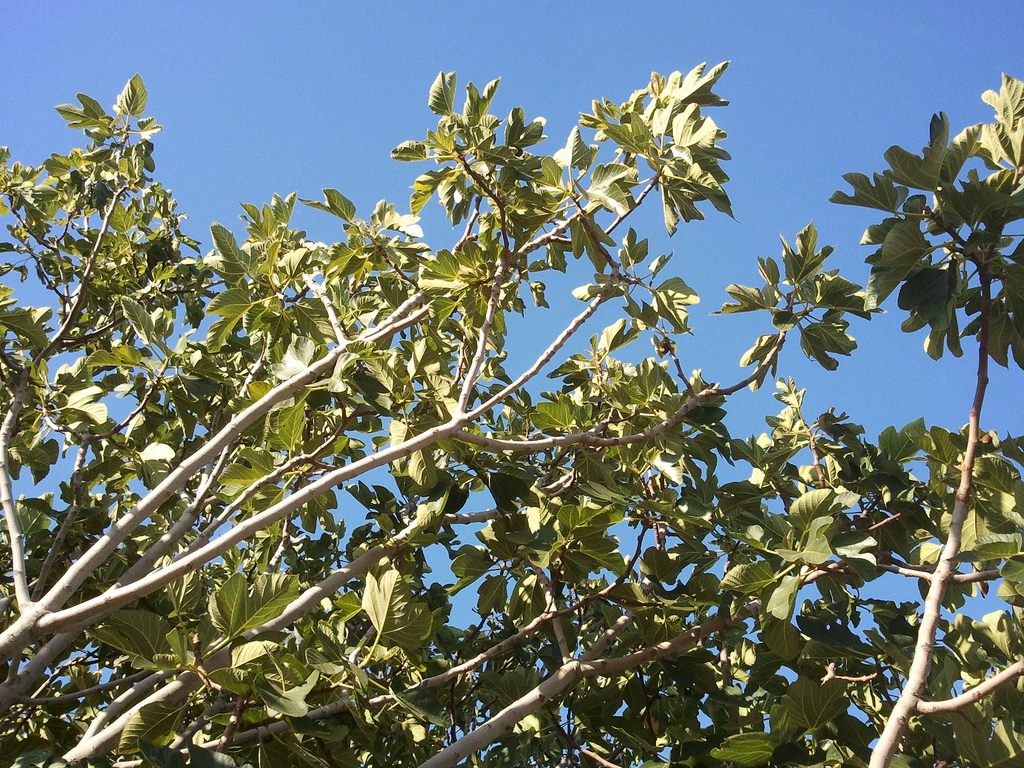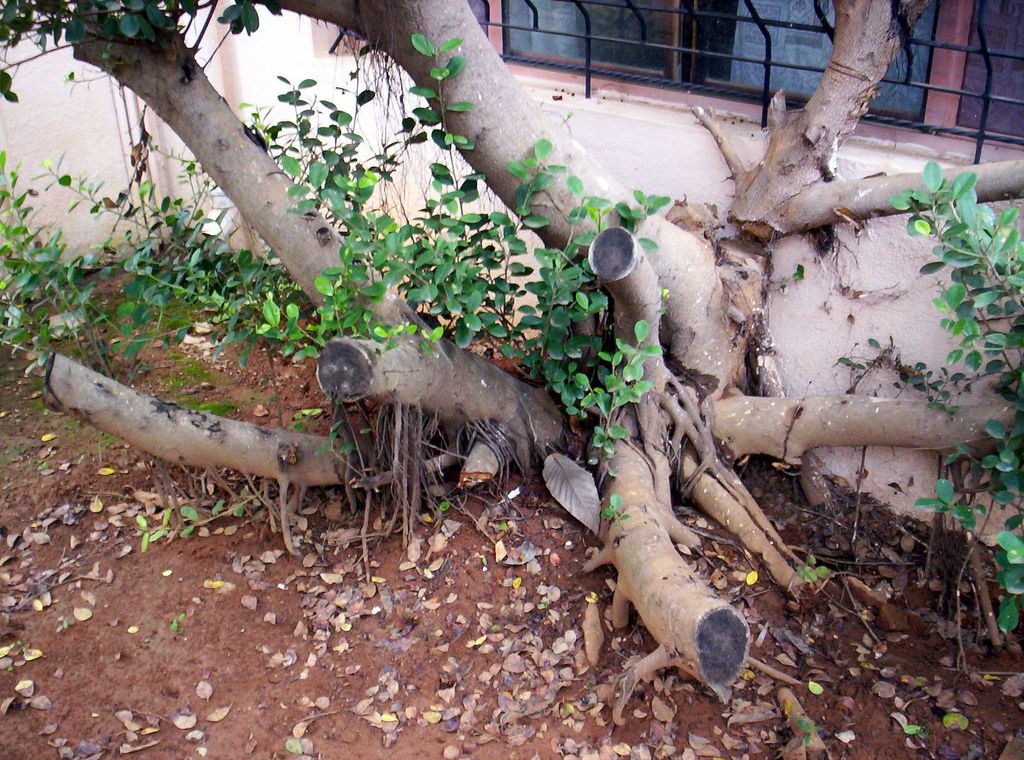Tree Law is a Gnarly, Twisted Branch of the Legal System
These lawyers specialize in arboreal arbitration.

A tree lawyer will help you determine liability when it comes to fallen trees. (Photo: slgckgc/CC BY 2.0)
It begins almost like that familiar tree-falls-in-the-woods saying, if that saying grew up to become a lawyer: if a tree falls on a car, and its trunk crosses two boundary lines, who is liable for the damages?
Unlike the tree-in-the-woods scenario, however, this conundrum has an answer. A tree’s trunk—where it emerges from the ground—dictates who owns it. If any part of its trunk crosses a boundary line, then it is jointly owned, and both parties bear responsibility for the damages that it might cause, if they did not take necessary steps to inspect and maintain that tree.

Welcome to the world of tree law, a little-known corner of the legal system that deals with everything tree-related, from fatalities caused by falling branches to disputes over a tree blocking a view. Did someone sneak onto your property and cut your tree without your consent? Better get yourself a tree lawyer. Were you hit by the falling branch of a decrepit city tree? Lawyer up and head to tree court.
“Tree law is anything that you can imagine that might give rise to disputes between people concerning trees,” says Barri Bonapart, a California tree lawyer. “That can be encroaching roots, that can be a loss of a view, that can be property damage or personal injury from a tree failure. It could be trespass and wrongful cutting or damaging of a tree, and anything and everything in between.”
But while all tree cases involve a tree in some way, Bonapart cautions that most of the time, the trees are just the tip of the problem.
“It’s never about the trees,” Bonapart says. “The trees often serve as lightning rods for other issues that are the psychological underpinning of a dispute that people might have with each other.”

Tree lawyer Barri Bonapart. (Photo: Courtesy Barri Bonapart)
Like most attorneys that specialize in tree law, Bonapart did not graduate law school with the intention of becoming a tree lawyer. She spent years working in complex commercial litigation, representing faceless multinational corporations in multistate cases. Then, one day, a family friend approached her with a problem: a neighbor had cut down her blackwood acacias, and she wanted Bonapart’s help in collecting damages.
“I thought, as most lawyers do when they get their first tree case: ‘How hard can it be?’” Bonapart says. “I quickly learned it was very complex and very nuanced.”
In California, for instance, laws pertaining to trees can span as many as six sections in California’s Civil Code, while a single trespassing incident involving a tree could cover as many as three different sections of the state’s Penal Code.
“All my cases are weird, wacky, and unique, and just when I think it can’t get any weirder or wackier, somebody else walks in the door,” she says.

Tree law governs disputes over trees, such as loss of a view. (Photo: Jocelyn Kinghorn/CC BY-SA 2.0)
While it’s likely that disputes and rules involving trees have been around for as long as trees have been considered property, many of the tree laws currently followed in the United States find their root in English common law from hundreds of years ago. Back then, the rules governing trees were fairly simple. If a your neighbor’s tree branches hung onto your property, for example, you were allowed, under common law, to cut them back to your boundary line. If that tree branch had fruit hanging on it, however, that fruit was essentially forbidden—under common law, any fruit hanging on a tree belonged to the owner of the tree, as to discourage neighbors from feasting on the fruits of someone else’s arboreal labors.

Under English common law, the fruit hanging from a tree belonged only to the owner of that tree. (Photo: Mike Linksvayer/Public Domain)
In the United States, tree law is mostly a product of case law, which is based on the outcomes of previous legal cases. That means that tree law can vary widely from state to state—a judge can rule based on past cases, or forge a new opinion—but there are still basic tenets that apply nationwide. Ownership of a tree, for instance, is dictated by where the trunk of the tree emerges from the ground—if even the slightest bit of a trunk goes through a property line, then it’s a jointly owned tree.
According to tree lawyers, most tree law cases revolve around neighbor disputes, like the cutting (without permission, sometimes out of retribution) of a neighbor’s tree, or whether one neighbor’s tree unfairly blocks another’s view. In most states, residents are allowed to cut any branches off of a tree that hangs onto their property, up to the boundary line, regardless of whether or not the tree ultimately survived the chopping—that’s known as the Massachusetts Rule, because it was first decided in a Massachusetts court. But a 1993 California case amended the Massachusetts Rule slightly by stipulating that anyone looking to chop down infringing tree branches or roots needs to act “reasonably,” which meant taking into account whether the action would ultimately damage the tree.

Most cases revolve around disputes like cutting a neighbor’s tree without permission. (Photo: Mikhail Esteves/CC BY 2.0)
Other times, cases can be about damages caused by a falling tree—and in the worst cases, those fallen trees prove fatal. Lew Block, a consulting arborist and author of Tree Law Cases in the USA, once worked on a case in which both the defendant and plaintiff in the case were deceased, killed by the same falling tree.
“They were friends and lived next door, and were on the front walk chatting and the tree broke and fell and killed both of them,” Block says.
According to Victor Murello, a tree attorney in Columbus, Ohio, it is most common for tree law cases to crop up in urban areas, where dueling desires for personal space and abundant landscaping often result in disputes over trees. United States tree law even has a special rule for people in urban areas, which is that every tree in an urban area must be inspected and maintained by its owner. If the owner of that tree fails to inspect or maintain that tree, and it falls and hits a person or thing, then that owner is liable.
Tree owners in rural areas, on the other hand, face less stringent requirements.

In rural areas, there is less onus on maintaining and inspecting trees. (Photo: Hector G./CC BY-SA 2.0)
“In the rural area, the courts are not so strict about doing individual inspections of trees,” Murello explains, noting, however, that a ruling out of a Connecticut court found that as the risk of potential harm caused by a tree increases, the duty to inspect that tree also increases—regardless of whether it’s located on a lightly traveled rural highway or a bustling urban walkway.
Overall, Murello—who has been practicing tree law since 1974—says that he has seen a marked increase in the number of tree cases brought to court in recent years. That uptick has given Murello plenty to write about on his blog, and in his email newsletter, where interested readers can have a different tree case delivered to their inbox each day.
“There are so many more cases going to court now,” he says.
Bonapart agrees, noting that her office turns away more cases than it can take.
“It is insane the number of disputes that people have over trees.”
And while Bonapart says that she thinks of her job as helping to “heal the rifts in our social fabric,” her particular speciality has made it more difficult to find a good parking spot.
“I look at it and I wonder, ‘Should I park under that tree? It looks like it may lose a limb,’” she said. “I find myself thinking about and looking at trees in a very different way, both the wonderful aspects of the trees but also the liability aspects as well.”












Follow us on Twitter to get the latest on the world's hidden wonders.
Like us on Facebook to get the latest on the world's hidden wonders.
Follow us on Twitter Like us on Facebook